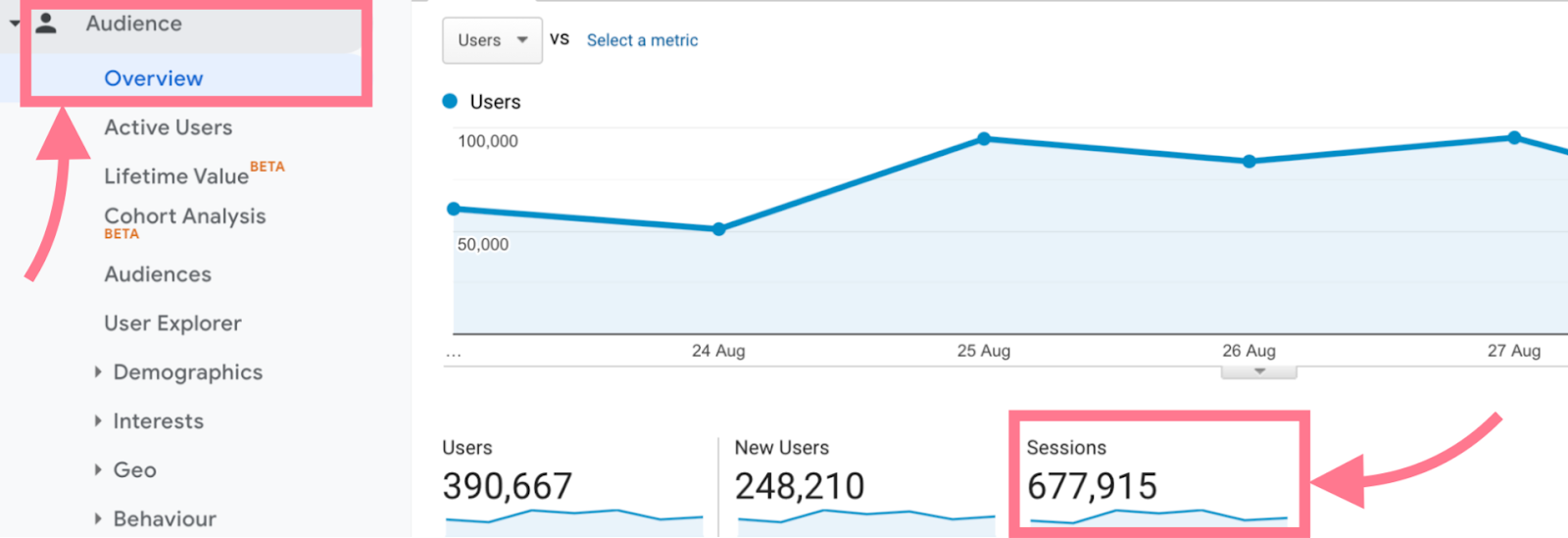A Total Overview to Understanding When Does the Google Analytics Tracking Code Send an Event Hit to Analytics
Master Site Insights With Accurate Google Analytics Monitoring Code
The effective usage of Google Analytics rests on the specific implementation of its monitoring code, a basic action often overlooked by web site proprietors. This apparently straightforward JavaScript fragment, when appropriately placed, becomes the foundation of information collection, offering understandings into individual behavior and site efficiency. Nonetheless, challenges can emerge throughout configuration, potentially skewing the data and leading to misinformed choices. Recognizing these ins and outs is crucial for making the most of the benefits of analytics. What are the usual mistakes that could weaken your monitoring efforts, and exactly how can you guarantee precision in your method?
Recognizing Google Analytics Basics
Google Analytics is an important tool for website proprietors and marketing professionals, offering important insights into individual habits and internet site performance. At its core, Google Analytics collects information about site visitors to a website, allowing customers to analyze metrics such as traffic resources, customer engagement, and conversion rates. Comprehending these principles is essential for enhancing a web site's efficiency and improving customer experience.
The platform employs cookies to track communications, recording information such as page sights, session durations, and bounce rates. This details is accumulated and provided with adjustable control panels, allowing customers to visualize patterns with time. Trick efficiency indicators (KPIs) can be monitored, such as the overall variety of customers, brand-new versus returning visitors, and the geographic circulation of the audience.
In Addition, Google Analytics supplies division attributes, permitting individuals to separate details traffic resources or individual demographics for even more targeted evaluation. By grasping these fundamental elements, internet site proprietors can make informed decisions regarding content technique, advertising and marketing campaigns, and general site improvements. Eventually, understanding Google Analytics fundamentals is vital for leveraging data to drive development and attain business goals properly.
Setting Up Your Monitoring Code

Copy the given monitoring code and paste it into the HTML of your website. Ideally, this code must be positioned in the header area of every web page you want to track. This makes sure that the tracking code tons before any other content, enabling it to record information precisely. There are plugins offered that simplify the assimilation process. if you are using a material management system (CMS) like WordPress.
After installation, verify that the monitoring code is operating appropriately by utilizing Google Tag Assistant or the Real-Time reports in Google Analytics - when does the google analytics tracking code send an event hit to analytics?. This action is necessary to verify that your information collection is accurate and energetic, establishing the structure for informative evaluation
Typical Monitoring Code Issues
This might happen when the tracking code is placed in the incorrect area of the internet site's HTML, commonly leading to incomplete or absent information. Additionally, having multiple instances of the tracking code on a solitary web page can result in inflated metrics, as individual interactions may be counted much more than when.
One more concern develops from the usage of ad blockers, which can protect against the monitoring code from executing entirely, hence skewing data. when does the google analytics tracking code send an event hit to analytics?. Additionally, failure to configure filters appropriately can lead to the exclusion of essential web traffic resources or the addition of unwanted recommendation spam, misshaping the information collected
Web site proprietors might additionally ignore the value of tracking code updates, particularly when moving to Google Analytics 4 (GA4) from Universal Analytics. Last but not least, inadequate testing prior to introducing modifications can cause undetected errors in the tracking code, even more making complex information reliability. Attending to these typical issues is vital for ensuring accurate tracking and informative analytics.
Analyzing Website Data Properly
Exact information collection is only the initial action in leveraging Google Analytics; the real value depends on efficiently analyzing that information to drive enlightened decision-making. To achieve this, it is vital to identify vital performance indicators (KPIs) that align with your service goals. Concentrate on metrics such as conversion rates, user engagement, and traffic resources, as these will certainly give understandings into user behavior and the general efficiency of your internet site.
Utilizing Google Analytics' segmentation features allows for a deeper understanding of your audience. By damaging down data into certain why not look here demographics, actions, and web traffic channels, you can uncover patterns and patterns that notify targeted strategies. Carrying out custom reports and control panels can streamline my latest blog post this procedure, enabling quick accessibility to essential data.
Moreover, routinely assessing data patterns with time helps to determine abnormalities and opportunities for enhancement. Make use of visualization devices to present data in a conveniently absorbable format, assisting in more efficient interaction with stakeholders. Inevitably, the ability to evaluate web site information properly encourages companies to make calculated choices that boost user experience, optimize marketing efforts, and drive growth.

Finest Practices for Accurate Tracking
Applying efficient monitoring methods is essential for getting trustworthy information in Google Analytics. To guarantee precise monitoring, begin by properly setting up the Google Analytics tracking code on every web page of your website. This can be completed through a tag supervisor or by directly installing the code into the HTML.
Following, configure your Google Analytics account to exclude interior website traffic. This can be done by setting up filters that recognize and eliminate sees from your company's IP address, thus protecting against skewed data. Additionally, utilize occasion monitoring to keep an eye on details customer communications, such as downloads or video plays, which standard web page views might overlook.
Frequently examine your tracking arrangement to verify that all attributes, such as objectives and ecommerce monitoring, are functioning correctly. Develop a constant naming convention for your events and projects to assist in less complicated coverage and evaluation.
Lastly, take into consideration leveraging UTM check my reference parameters for campaigns to acquire understandings into the efficiency of various marketing efforts. By adhering to these ideal techniques, you can enhance the accuracy of your data collection and analysis, ultimately resulting in more informed decision-making for your site.
Conclusion
By ensuring the monitoring code is correctly positioned and on a regular basis audited, internet site owners can capture essential individual interaction data, hence assisting in the identification of crucial performance signs. Ultimately, a robust monitoring framework improves the capacity to drive interaction and boost overall web site efficiency.

Insufficient screening prior to introducing adjustments can result in unnoticed errors in the tracking code, better complicating data dependability.Applying reliable monitoring methods is essential for obtaining reputable data in Google Analytics. By making sure the monitoring code is properly put and routinely examined, website owners can catch essential user communication information, thus helping with the identification of key efficiency signs.